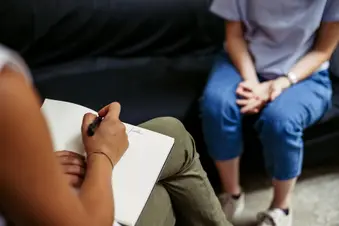
Vision loss is a difficult condition, but fortunately there are many low vision aids that can help you manage day to day.
If you are reading this, you probably do not have low vision or you are already using these tools. Perhaps you know someone who is struggling, so pass on this information.
Some eye conditions, like diabetic retinopathy and certain corneal diseases, can be treated so that vision is restored or maintained. Unfortunately, some eye conditions cannot be treated, resulting in low vision or blindness. While one obvious challenge of vision loss is restoring mobility and function, there is also the emotional toll of vision loss to consider. There are steps you can take to better cope with the condition, including:
Learn More About Your Vision Loss
You can order written or taped materials on vision loss through state agencies and nonprofit groups. You may also find it helpful to discuss vision loss with your doctor, as well as other people who have lost vision.
Seek Therapeutic Counseling for Vision Loss
While you can lose vision at any age, vision loss occurs most often among mature adults. Like any other major life event, vision loss can bring feelings of loneliness, helplessness, anxiety, and depression. Doctors, state agencies, and nonprofit groups offer counseling for those with vision loss and can provide referrals to other professionals based on individual needs. People with severe vision loss especially should be encouraged to consider these resources.
Grieving the Loss of Vision
The loss of vision can be devastating. Understanding the process of grief linked to vision loss can help you and your loved ones deal with physical and emotional challenges.
Explore Adjustment Classes and Devices for Vision Loss
Tasks as simple as dressing in the morning or as complex as cooking a meal become new challenges after vision loss. In adjustment classes, people can learn new or alternative techniques to help maintain independence. While building mobility and motor skills, these classes and aids also teach the patience and confidence required to live with low vision on a daily basis.
What Low Vision Aids Are Available?
A variety of low vision aids are very useful. Popular low vision aids include:
- Telescopic glasses
- Lenses that filter light
- Magnifying glasses
- Hand magnifiers
- Closed-circuit television
- Reading prisms
- Eyeglasses with special lenses
- Electronic glasses
These devices are stronger than regular eyeglasses and can be hand-held or stationary. You can also buy computer software that can alter screen images or read typed text to make new technology and electronic information readily available.
Non-optical aids also help with daily activities. These devices "talk" to you, or offer enlarged print or Braille. Many also have special features, such as high contrast, that make them easier to see. Some popular non-optical devices include:
- Text-reading software
- Braille readers
- Check guides
- High-contrast clocks and watches
- Talking watches and clocks
- Large-print publications
- Clocks, phones, and watches with large numbers
- Smartphone apps
There are low vision clinics and agencies in many locations. They can help people choose the best vision aids and services for their personal visual problem.
Show Sources
Photo Credit: iStock / Getty Images
SOURCES:
National Eye Institute.
American Foundation for the Blind.